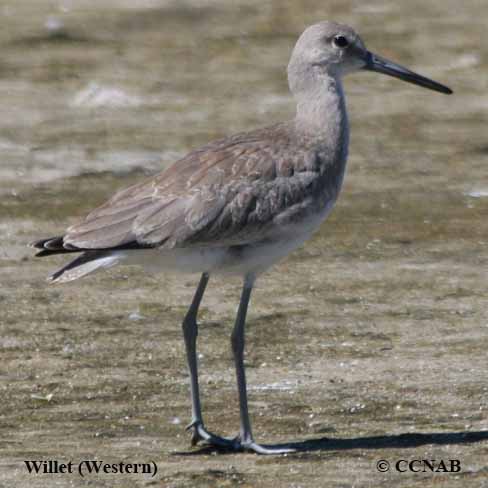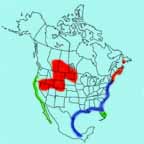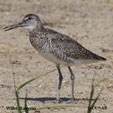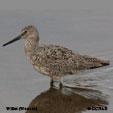North American Bird Search Box
This search box can be used to find bird species using bird's english, french or latin name, or to identify bird by its 4 letter Alpha Code
Field Guide for all the Birds of North America
Willet
4 Letter (english names) Alpha Code: WILL (1)
Chevalier semipalmé
Tringa semipalmata
Information, images and range maps on over 1,000 birds of North America, including sub-species, vagrants, introduced birds and possibilities

There are two sub-species of the Willet. One is the Willet (Eastern), and when seen in breeding season, it is recognized by its dark plumage. It is seen from the eastern tip of Newfoundland, along the coast of the Atlantic, right into Mexico and the Caribbean islands. The other is the Willet (Pacific) and it has a lighter coloured plumage, when it is seen in breeding season. This shorebird nests on the plains of the US and Canada. It is regularly reported seen in the eastern portions of the North American continent and it spends its winter months along the Pacific coast right into Mexico. North American Birds Videos
- Click here - Willet - Western sub-species
North American Birds Calls
- Click here
- Summer
- Year Around
- Winter

Willets are among the larger shorebirds seen in North America. They are recognized by their chunky bodies, sturdy legs and thick bills. When these birds fly, one can see large white stripes through their wings, situated between black wing tips and coverts. It is quite common to see them feeding on crabs during low tide waters.
Reference to Other Bird Site:
ABA - American Birding Association This site represents an organization that maintains official records of all birds species that have been proven to have been seen inside the perimeters of the North American Continent and the surrounding bodies of water. Regular revised versions are posted to keep the bird list current at all times. This is the list used by all serious birders over their lifetime. You may be aware of the movie called the "Big Year". It was with this list that all the competing birders used in an attempt to set a new record as to how many bird species that could be seen by an individual birder in one calendar year.

